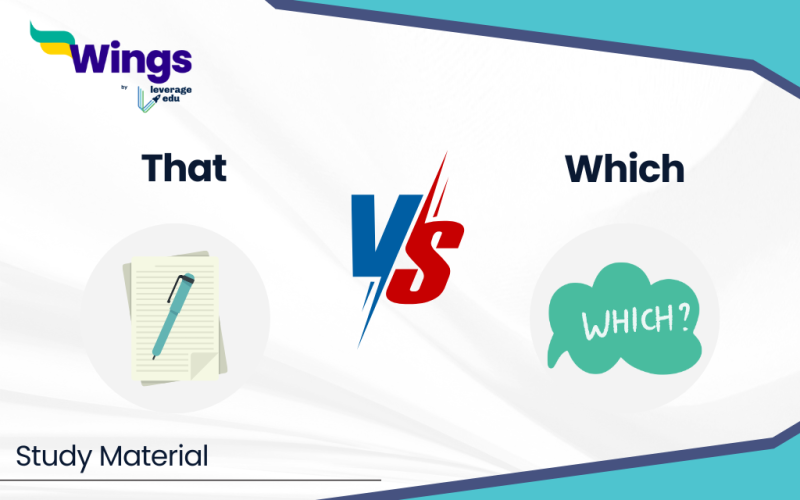It can be challenging to understand the English language. It is full of norms and exclusion from rules that can make learning a language seem nearly impossible. The difference between the terms “that” and “which” is one of those nuances that frequently causes confusion. You’re in the right place if you’re having trouble understanding the difference between “that” and “which”. The goal of this blog is to offer a thorough analysis of the difference between “that” and “which.”
Although “which” and “that” are frequently used synonymously, they are not similar.
Both “that” and “which” relate to anything that was previously discussed when introducing a new clause.
“That” introduces an important clause, whereas “which” adds a non-essential one. This is the difference between the two.
Table of Contents [show]
Difference between Which and That
People generally get confused when using the words which and that in grammar. The reason being, they both have almost similar meanings but are way different from each other. Let’s chck the difference between which and that below:
| S.No. | “That” | “Which” |
| 1. | Introduces essential clauses | Introduces non-essential clauses |
| 2. | Can be used in defining and non-defining relative clauses | Mostly used in non-defining relative clauses |
| 3. | Typically, comma are not used | Often, a comma is used |
| 4. | No additional punctuation needed to separate it from the sentence | It usually requires additional punctuation (like a comma or parentheses) |
| 5. | Information is essential to the meaning of the sentence | Information is additional and not critical |
| 6. | Example: “The books that are on the shelf are mine.” | Example: “The books, which are on the shelf, are mine.” |
| 7. | Without changing the meaning of the sentence, it cannot be removed | Without changing the meaning of the sentence, it can be removed |
| 8. | Usually used for informal language | Usually used for formal language |
The Word – Which
In a sentence, “which” is used to introduce additional details. The relative words that follows it offers more details about the noun that comes prior it. To understand the main sentence, one does not need to grasp the information offered by the relative clause. A comma usually comes before “which.”
Usage of Which
- Introduction of non-essential clauses that provide additional information.
- Use after a comma to introduce the relative clause.
- Use it to refer to things and animals.
Examples of Which
- My keys, which are kept on the table are those of scooty.
- The office, which is renovated recently, belongs to my neibhours.
- The cat, which is peeing in the garden is hers.
The Word – That
In a sentence, “that” is used to introduce specific information. It presents a relative sentence that gives the essential details about the word it comes before. Understanding the main sentence requires knowledge of the information offered by the relative clause. There is never a comma before “that.”
Usage of That
- Introduction of non-essential clauses that provide specific information.
- Don’t use comma to introduce the relative clause.
- Use it to refer to people, things and animals.
Examples of That
- Books that are kept on the table are old.
- I need the work done that was given by him.
- Let’s go to the same place that we visited yesterday.
Practise Questions using Which and That
Ques 1. The shop ……. I use to go to is just beside the road.
Ques 2. Laptops …….. are used for gaming are generally expensive.
Ques 3. The tables, ……. are kept downstairs have been replaced.
Ques 4. The cake, ……. Is baked by my cousin is super tasty.
Ques 5. ……. book did you read the last night?
Answers
- That
- That
- Which
- Which
- which
FAQs
No, when “which” introduces a non-essential clause, it is always preceded by a comma.
Since they both have different meanings and work differently, they cannot be used interchangeably.
Yes, “that” can be used to refer to people, things or animals.
Related Posts
This was all about the “Difference Between That and Which”. For more such informative blogs, check out our Study Material Section, you can learn more about us by visiting our Indian exams page.
 One app for all your study abroad needs
One app for all your study abroad needs















 45,000+ students trusted us with their dreams. Take the first step today!
45,000+ students trusted us with their dreams. Take the first step today!
